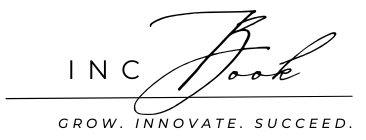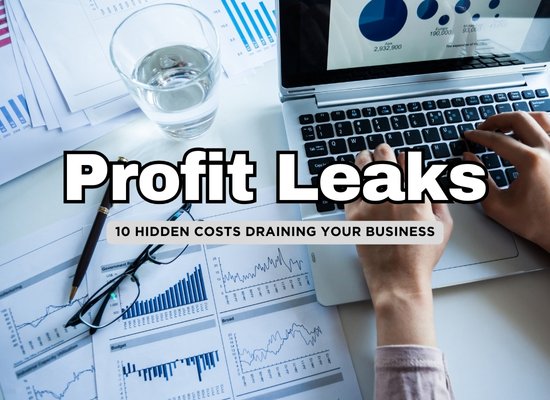You’re making sales, clients are coming in, and revenue looks solid—so why does your bottom line feel underwhelming? Hidden business expenses quietly eat away at margins without drawing attention. These recurring or unnecessary costs add up over time, draining cash flow and limiting growth.
Many businesses don’t even realize they’re bleeding money. Here are ten hidden cost traps that could be silently killing your profits and how to stop them before they get out of control.
1️⃣ Unused Software Subscriptions
It’s easy to sign up for software tools when they promise to boost efficiency, automate tasks, or enhance collaboration. But are you really using everything you’re paying for? Many businesses forget to audit and cancel unused subscriptions, leading to thousands of dollars wasted per year on tools no one actually needs.
How It’s Draining Your Profits
- Monthly software fees pile up over time. Even small $10-$50/month tools add up.
- Employees might be using multiple tools that perform the same function.
- Annual renewals auto-charge without a second thought.
How to Fix It
- Conduct a quarterly software audit to identify unused or redundant tools.
- Consolidate services if two tools serve the same purpose.
- Use pay-as-you-go options instead of locked-in subscriptions.
- Negotiate with providers for discounts, better plans, or cancellation deals.
Example Scenario
A small marketing agency realized they were paying for five different analytics tools when one could do the job. After cutting unnecessary subscriptions, they saved $3,600 per year without losing functionality.
2️⃣ Overpriced Merchant Processing Fees
Every business needs to accept payments, but not all merchant processing services are created equal. Many business owners simply accept default credit card processing rates without realizing how much they’re losing in hidden fees, high transaction costs, and outdated pricing structures.
How It’s Draining Your Profits
- Processing fees eat up 2-4% of every sale.
- Hidden charges like chargeback fees, PCI compliance fees, and batch fees quietly add up.
- Many businesses use the wrong pricing model. Flat-rate processing may not be the cheapest for high-volume businesses.
How to Fix It
- Shop around and compare processors instead of sticking with what your bank offers.
- Negotiate your rates. Many processors will lower fees if you ask or if you have a solid transaction history.
- Consider ACH payments, which are often cheaper than credit cards for B2B transactions.
- Use surcharging options where legally allowed to pass credit card fees to customers.
Example Scenario
A retail store switched from a flat-rate processor at 2.9% to an interchange-plus model, reducing fees from $12,000 to $7,500 per year on the same revenue. That’s $4,500 straight back into their business.
3️⃣ Unnecessary Office Space & Utilities
Do you really need that large office, high-end lease, or fully stocked breakroom? Many businesses overspend on workspace and utilities, especially in a world where remote and hybrid work are becoming the norm.
How It’s Draining Your Profits
- Paying for unused space, including desks, rooms, or entire office sections.
- Sky-high utility bills from wasted energy on lighting, heating, and electronics.
- Long-term lease commitments that lock businesses into expensive multi-year agreements when downsizing could save thousands.
How to Fix It
- Assess if remote or hybrid work is viable. Downsizing or subleasing extra space can cut costs significantly.
- Negotiate lease terms. Landlords may be willing to restructure leases or offer rent relief.
- Use energy-efficient solutions like LED lighting, programmable thermostats, and automatic shut-off policies.
- Consider coworking spaces for smaller teams instead of maintaining an underutilized office.
Example Scenario
A tech startup realized half of its office space was unused after switching to hybrid work. By downsizing to a coworking setup, they saved $80,000 per year while still providing an office for employees who needed it.
4️⃣ Inefficient Supply Chain Costs
Many businesses overpay for materials, inventory, and logistics without realizing how much they could save by optimizing their supply chain. Small inefficiencies—like high shipping rates, poor vendor terms, and lack of bulk discounts—quickly add up.
How It’s Draining Your Profits
- Paying premium shipping rates instead of negotiating better terms.
- Ordering in smaller batches when bulk discounts are available.
- Sticking with the same suppliers out of habit instead of exploring competitive options.
- Poor inventory management leading to overstocking or shortages.
How to Fix It
- Regularly compare supplier pricing to ensure you’re getting the best rates.
- Negotiate bulk purchase discounts or explore group buying options.
- Optimize inventory levels using data analytics to prevent unnecessary overstocking.
- Consider alternative shipping options, including consolidating shipments to reduce costs.
Example Scenario
A manufacturing company was using a supplier that had increased its prices over time. By switching to a competitor offering the same materials at a 15% lower cost, they saved $50,000 annually without sacrificing quality.
5️⃣ Unused or Redundant Employee Perks
Offering perks and benefits can improve employee satisfaction, but many companies waste money on perks that employees don’t use or value. Gym memberships, free lunches, and software stipends may sound great, but if they go unused, they become a pure expense with no return.
How It’s Draining Your Profits
- Paying for unused gym memberships or wellness programs that employees don’t engage with.
- Offering outdated perks that don’t align with employee needs.
- Providing expensive benefits when more affordable, high-value alternatives exist.
How to Fix It
- Survey employees to see which perks they actually use and appreciate.
- Offer flexible benefits where employees can choose what fits their lifestyle.
- Cut underutilized perks and reallocate savings toward higher-impact programs like performance bonuses or professional development.
Example Scenario
A mid-sized tech firm was spending $25,000 a year on a catered office lunch program, but only half the employees regularly used it. After switching to a more flexible meal stipend program, they reduced costs by 40% while improving employee satisfaction.
6️⃣ High Employee Turnover Costs
Replacing an employee can cost anywhere from 50% to 200% of their annual salary when considering recruiting, onboarding, and lost productivity. Many businesses fail to see the hidden costs of turnover and neglect investments in retention.
How It’s Draining Your Profits
- Constant hiring cycles lead to recruitment and training expenses.
- Lost productivity from vacant positions and ramp-up time for new employees.
- Low morale impacting team performance and customer satisfaction.
How to Fix It
- Improve workplace culture to reduce voluntary turnover.
- Offer competitive salaries and growth opportunities to retain talent.
- Provide professional development and training programs to increase job satisfaction.
- Regularly check in with employees to address concerns before they resign.
Example Scenario
A customer service center had a 40% annual turnover rate, leading to high hiring and training costs. By implementing a mentorship program and better incentives, turnover dropped to 20%, saving the company over $100,000 per year in hiring expenses.
7️⃣ Excessive Marketing Spend
Marketing can be a significant drain on your business’s budget, especially when it’s not strategically focused. Many businesses waste money on ineffective ad campaigns or broad-targeting strategies that don’t reach their ideal audience.
How It’s Draining Your Profits
- Spending on mass advertising that doesn’t lead to high-quality leads or conversions.
- Overpaying for pay-per-click (PPC) campaigns with poor return on investment (ROI).
- Allocating funds to low-impact platforms that aren’t aligned with your target market.
How to Fix It
- Focus on targeted, high-ROI campaigns—choose platforms that attract your ideal audience.
- Use data analytics to refine ad targeting and optimize PPC bids.
- Reallocate funds to content marketing, SEO, or social media engagement for long-term growth at a lower cost.
Example Scenario
A retail business was spending $30,000 per month on generic PPC ads that were not converting. By switching to more targeted Facebook and Instagram ads, they reduced spend by 25% while seeing a 40% increase in conversions.
8️⃣ Overstaffing or Poor Resource Allocation
Hiring more employees than necessary or misallocating resources is a common issue that leads to unnecessary payroll costs. Overstaffing during slow periods or mismanaging team assignments can drain profits quickly.
How It’s Draining Your Profits
- Paying for unnecessary positions during slow seasons or periods of low productivity.
- Employees with misaligned skill sets spending time on tasks that could be automated.
- Poor project planning that leads to underutilized employees or duplicated work.
How to Fix It
- Adjust staffing levels to match demand—hire temporary or part-time staff if needed.
- Invest in training and cross-skilling employees to handle multiple roles.
- Automate routine tasks to free up time for high-value activities.
Example Scenario
A marketing agency realized it was overstaffed in certain areas, with junior employees doing tasks that could easily be automated. By downsizing the team and reallocating resources, they saved 15% on payroll costs while maintaining performance.
9️⃣ Poor Inventory Management
Inventory management can easily become a profit drain if stock is over-ordered, wasted, or not accounted for properly. Many businesses fail to track their inventory accurately, leading to stockouts, overstocking, or spoilage—which costs money.
How It’s Draining Your Profits
- Ordering too much inventory that sits on shelves for months, tying up cash flow.
- Overestimating demand and stocking out, causing lost sales opportunities.
- Wasting products due to improper storage or expired goods.
How to Fix It
- Implement inventory management software to track stock levels and predict demand accurately.
- Use just-in-time inventory to minimize stockholding costs.
- Regularly review stock rotation to reduce waste and spoilage.
Example Scenario
A food distributor was overstocking perishable goods, leading to a 20% waste rate. By using inventory software to optimize orders, they reduced waste by 15% and saved $200,000 annually.
1️⃣0️⃣ Inefficient Tax Strategy
Many businesses don’t take full advantage of tax deductions, credits, and strategies to reduce their taxable income. Inefficiencies in your tax strategy can lead to paying more than necessary in taxes, ultimately reducing profits.
How It’s Draining Your Profits
- Missing out on deductions for business expenses like travel, equipment, or home office setups.
- Not taking advantage of tax credits for research, development, or hiring.
- Overpaying on payroll taxes or making incorrect filings.
How to Fix It
- Hire a tax professional to review your deductions and credits annually.
- Implement a tax-efficient structure for your business (S-corp, LLC, etc.) to minimize liability.
- Use accounting software to ensure accurate and timely filings.
Example Scenario
A small construction firm was missing out on several available tax credits for employee training and equipment depreciation. After working with a tax advisor, they reduced their tax bill by 30%, saving $50,000 in the first year.
These 10 hidden cost traps are often overlooked but can make a huge difference in your profitability. By addressing these expenses and implementing strategic changes, you can unlock significant savings and increase your margins—putting you on the path to more sustainable business growth.



